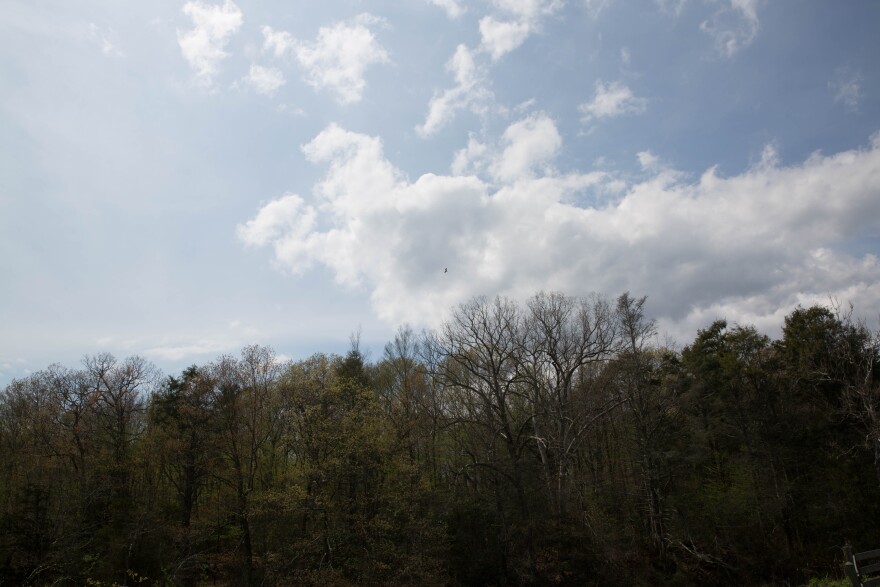In nature, fascinating biology can be found on the edges -- intermingled habitats where biodiversity can flourish. Connecticut Public Radio recently traveled to one such edge, what’s called a “head of tide.”
I’m straddling a lumpy bridge arching over an old stone dam. Long Island Sound is only a few miles away and Interstate 95 is even closer. But here, wrapped in trees and the sounds of flowing water, it all feels so far away.
“Today we’re at the head of tide on the Menunketesuck River in Westbrook and Clinton,” said Steve Gephard, a supervising fisheries biologist with the state Department of Energy and Environmental Protection.
A head of tide is “where one ecosystem ends and gives it up to another ecosystem,” Gephard said.
At high tide, he says this area of the Menunketesuck, pronounced “muh nun kuh tee suck,” is brackish. That means there’s a mixture of fresh and salt water, which is important for migratory fish like eels, alewives, or blue-back herring.

“This is the area where their bodies adapt to the changing salinity,” Gephard said. “These heads of tides are critical for making that transition for these animals that migrate back and forth.”
Protected plants, like Parker’s pipewort, mingle with invasive phragmites. Around the dam is an eel pass and fishway, managed by DEEP. The agency is also tearing down some old structures to make the area safe before it’s opened to hikers and hunters.
As our interview ends, Gephard pauses and looks up.

“There goes an osprey right now -- probably checking out the fish run just like we are,” Gephard said.
It’s a beautiful site. Heavy wingbeats lock into the osprey’s signature M-shaped silhouette. Both of us watch as the raptor silently soars over one of Connecticut’s least developed heads of tide.





